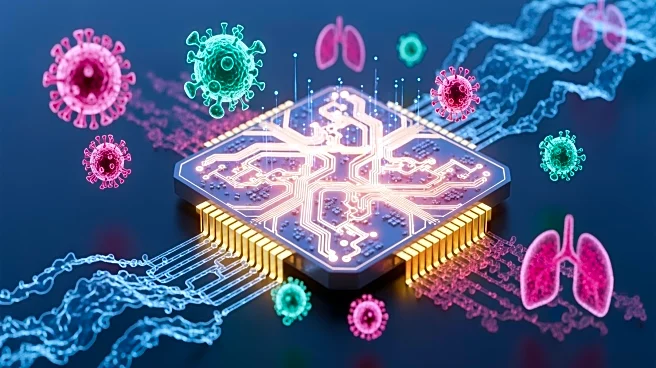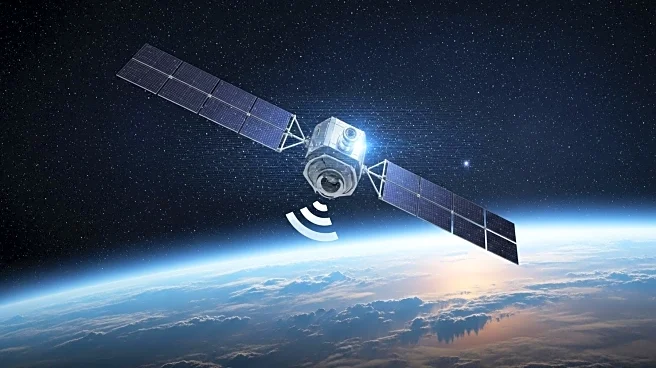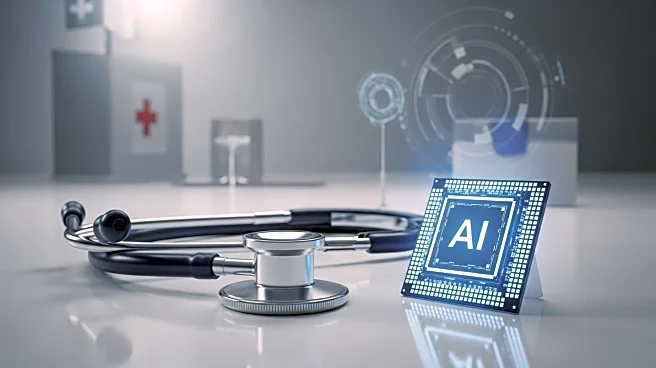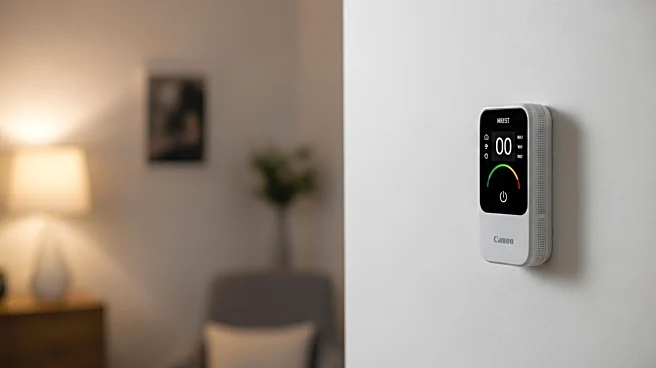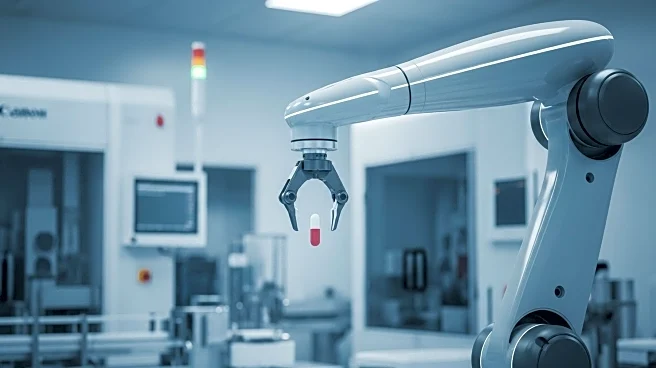What's Happening?
A new fully automated rotary microfluidic platform has been developed for high-throughput multiplex detection of respiratory tract pathogens. This system integrates reverse-transcription LAMP reactions within a consumable microfluidic chip, enabling simultaneous
processing of up to four individual detection channels. The platform is designed to perform on-chip nucleic acid lysis and LAMP amplification, with lyophilized reagents preloaded into the reaction chambers. The system maintains isothermal amplification at 65°C and uses a mobile fluorescence-detection head for real-time signal acquisition. The platform has demonstrated sensitivity and specificity in detecting pathogens such as M. pneumoniae, Influenza A and B viruses, and others, with clinical testing showing consistent results with standard PCR methods.
Why It's Important?
The development of this microfluidic platform represents a significant advancement in the field of pathogen detection, offering a rapid, automated, and high-throughput solution. This technology could greatly enhance the efficiency of diagnostic processes in healthcare settings, particularly in the context of respiratory diseases. By enabling multiplex detection, the platform can streamline the identification of multiple pathogens simultaneously, which is crucial for timely and accurate diagnosis. This could lead to improved patient outcomes and more effective management of infectious diseases, reducing the burden on healthcare systems.
What's Next?
The platform is poised for further clinical validation and potential commercialization, which could see its integration into healthcare facilities for routine diagnostic use. Continued development and optimization may expand its application to other types of pathogens, broadening its utility in medical diagnostics. Stakeholders such as healthcare providers, diagnostic labs, and public health agencies may show interest in adopting this technology to enhance their diagnostic capabilities.
Beyond the Headlines
The ethical implications of rapid pathogen detection technologies include considerations around data privacy and the potential for misuse in surveillance. Additionally, the cultural acceptance of automated diagnostic tools may vary, influencing their adoption across different regions. Long-term, this technology could contribute to shifts in healthcare delivery models, emphasizing preventive care and early intervention.
